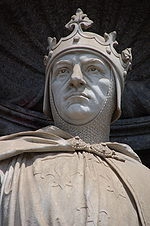How to Pronounce Charles I of Anjou
#50
Most Popular
Boost
Mar 21, 1226 Paris, Île de France, France Died on 07 Jan 1285 (aged 58)
King of Sicily
AriesCharles I Of Anjou, Date of Birth, Place of Birth, Family, Facts, Age, Net Worth, Biography and More in FamedBorn.com

King of Sicily
Aries